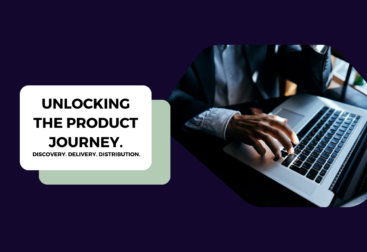Product Managers (PMs) sit at the intersection of technology, business, and user experience, tasked with delivering valuable products that solve real problems. However, even seasoned PMs can fall into certain traps that hinder the success of their products. Let us explore the seven most common mistakes product managers make and discuss how to avoid them.
1. Not Defining Clear Business Outcomes
One of the most critical mistakes PMs make is failing to tie product initiatives to clear business outcomes. Often, PMs get too engrossed in building features or meeting deadlines without understanding how these features contribute to the company’s larger goals.
Why It Happens: Many product managers feel the pressure to release features quickly, resulting in a focus on output rather than outcome. Without a clear connection to business goals, products risk becoming collections of features that don’t deliver value or drive meaningful growth.
How to Avoid It: Start by defining success in measurable business terms. Whether it’s increasing customer retention, improving operational efficiency, or boosting revenue, every product initiative should be tied to a key business outcome. Regularly revisit these outcomes to ensure alignment throughout the product development process.
2. Not Thinking About Users in Depth
A PM’s role is to champion the user’s needs, yet one of the most common pitfalls is not fully understanding or empathizing with the users. Instead, PMs may focus on surface-level customer requests or assume they know what users want without engaging in deep research.
Why It Happens: PMs can be time-constrained and may rush through user research, relying on assumptions or feedback from a small group of vocal users rather than conducting thorough research.
How to Avoid It: Invest time in understanding your users on a deeper level through qualitative research such as interviews, user testing, and ethnography. Create user personas, map user journeys, and identify pain points that need to be addressed. Remember, great products solve real problems, and to solve them effectively, you need to truly know who you’re solving for.
3. Rushing to Obvious Solutions
When faced with a problem, many PMs rush to the most apparent solution. While this may lead to quick decisions and execution, it often stifles creativity and innovation, leading to products that are not differentiated or innovative.
Why It Happens: Time pressure and the desire to “get things done” often push PMs to choose the quickest path forward. Obvious solutions can seem appealing because they are familiar and less risky, but they also come with the danger of being unimaginative.
How to Avoid It: Take the time to explore alternative approaches. Encourage your team to challenge assumptions and brainstorm creative solutions. Facilitate workshops, conduct market analysis, and look for inspiration from different industries or product categories. Innovation often comes from exploring the less obvious paths.
4. Failing to Validate Ideas
Launching a product or feature without proper validation is another critical mistake. Many PMs rely on gut feelings or anecdotal feedback to make product decisions, only to discover later that their ideas don’t resonate with users or solve the right problem.
Why It Happens: PMs may skip validation steps due to tight deadlines, budget constraints, or overconfidence in their understanding of the market.
How to Avoid It: Always validate your ideas before committing resources. Use tools like A/B testing, MVPs (minimum viable products), and customer interviews to gather feedback and data. Test assumptions and iterate based on the insights you gain. Validation reduces risk and ensures that your product is built to meet real user needs.
5. Lack of Proactive Planning for Metrics
PMs often fail to establish clear success metrics from the outset. Without proactive planning for how to measure success, it becomes difficult to know whether a product or feature is performing well, and adjustments may be delayed or misinformed.
Why It Happens: In the rush to deliver features, defining metrics can be an afterthought. Many PMs assume they will figure out how to measure success after launch.
How to Avoid It: Define your key metrics from the beginning of the product development process. These metrics should align with your business outcomes and user needs. Use tools like Google Analytics, Mixpanel, or custom dashboards to track performance in real-time. Make data-driven decisions to iterate and improve your product based on these insights.
6. Ineffective Collaboration
Product management is a team sport, and one of the most common mistakes PMs make is failing to collaborate effectively with cross-functional teams. This can lead to misaligned goals, communication breakdowns, and, ultimately, products that don’t meet the needs of all stakeholders.
Why It Happens: PMs may work in silos, focusing solely on their tasks without looping in other departments like engineering, marketing, or design. This can be exacerbated by unclear communication channels or differences in work styles.
How to Avoid It: Foster a culture of collaboration by involving cross-functional teams early and often in the product development process. Hold regular syncs, create clear documentation, and make sure everyone has access to the same information. Use tools like Slack, Jira, or Confluence to centralize communication. The more aligned your team is, the more effectively you can bring products to market.
7. Not Thinking for Scale
Many PMs make decisions that work well for the present but fail to consider how their product will scale in the future. This can lead to products that are difficult to maintain, lack the flexibility to accommodate new features, or become too complex to manage as they grow.
Why It Happens: It’s easy to focus on solving immediate problems and overlook future scalability. Startups and smaller teams, in particular, may prioritize short-term wins over long-term planning.
How to Avoid It: Always keep scalability in mind when making product decisions. Whether it’s choosing your tech stack, designing your architecture, or deciding on the scope of features, ask yourself how these choices will affect the product as it grows. Build with flexibility in mind, and ensure that your product can adapt to future changes in user demand, market conditions, or technology.
Conclusion
Product management is a complex and demanding role, and even the most experienced PMs can make mistakes. However, by being aware of common pitfalls such as not defining clear business outcomes, neglecting user insights, rushing to solutions, skipping validation, failing to plan for metrics, poor collaboration, and not thinking for scale, you can steer your product management efforts in the right direction. By avoiding these mistakes, you’ll increase the chances of delivering successful products that meet both business and user needs.
Staying mindful of these common mistakes will not only improve your effectiveness as a product manager but also contribute to building better products that stand the test of time.












